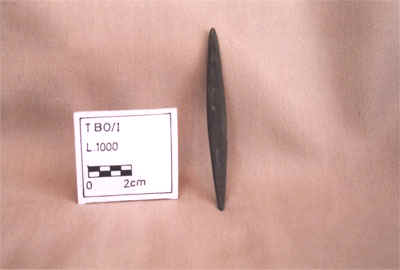The article below by Muhammad A. Dandamayev on the Achaemenid Education System was first published on-line on December 15, 1997 in the Encyclopedia Iranica and Last Updated: December 9, 2011.
Kindly note that a number of pictures displayed in the article below are from Kaveh Farrokh’s lectures at the University of British Columbia’s Continuing Studies Division , Stanford University’s WAIS 2006 Critical World Problems Conference Presentations on July 30-31, 2006 and Farrokh’s textbook Shadows in the Desert: Ancient Persia at War-Персы: Армия великих царей-سایههای صحرا-).
=====================================
Little is known of the training of children during the Achaemenid period. In two Elamite documents from Persepolis drafted in the 23rd regal year of Darius the Great (499 B.C.E.) “Persian boys (who) are copying texts” are mentioned (Hallock, nos. 871, 1137); the texts in question are records of the issue of grain to twenty-nine individuals and wine to sixteen. It is possible that the boys were learning Persian cuneiform script, which was probably known only to a few scribes, as it was used mainly for royal triumphal inscriptions. Most of nobles and highly placed Persian civil servants were literate, and writing played part in standard Persian education. The Persians also used foreign scribes (writing chiefly in Aramaic) in the state chancery.
 The oldest known “Pen” or Stylus (discovered in Bondul Tepe, Fars province, Iran), dated to the Middle Elamite era (c.1550-1000 BCE). This was used for inscribing mud tablets (Source: CAIS).
The oldest known “Pen” or Stylus (discovered in Bondul Tepe, Fars province, Iran), dated to the Middle Elamite era (c.1550-1000 BCE). This was used for inscribing mud tablets (Source: CAIS).
Greek sources provide some idea of typical Persian education. According to Herodotus, Persian boys were not allowed into the presence of their fathers until the age of five years; until then they lived among the women. From ages five to twenty years they were trained in horsemanship, swordsmanship, archery, and telling the truth (Herodotus, 1.136). Persians regarded lying as the worst of offenses, whereas prowess in arms was the mark of manliness. Xenophon wrote in Cyropaedia that until the age of sixteen or seventeen years the sons of Persian nobles were brought up at the royal court, practicing riding, archery, throwing the spear, and hunting.
The ancient Persians were also instructed in justice, obedience, endurance, and self-restraint (1.2.2-12, 7.5.86, 8.6.10; cf. idem, Anabasis 1.9.2-6; Strabo, 15.3.18). Clearly, apart from ethical guidance, the aim of Persian education was to produce efficient soldiers. This conclusion is confirmed by the tomb inscription of Darius the Great: “Trained am I both with hands and with feet. As a horseman I am a good horseman. As a bowman I am a good bowman both afoot and on horseback. As a spearman I am a good spearman both afoot and on horseback” (DNb 40-45; Kent, Old Persian, pp. 139-40). In Alcibiades (attributed to Plato, 1.120-23) it is noted that Persian princes were assigned at the age of fourteen years to four eminent Persians, called respectively the “wisest,” “most just,” “most temperate,” and “bravest,” who tutored them in the worship of the gods, government, temperance, and courage respectively. Plutarch (Artaxerxes 3.3) mentioned a priest who taught “the wisdom of the Magi” to Cyrus the Younger (q.v. vi). There is practically no information on education in the eastern satrapies of the Achaemenid empire, but the evidence for Babylonia and Egypt, where traditional educational systems continued under Persian rule, is extensive. In both provinces formal education was restricted to boys. Reading and writing, as well as some grammar, mathematics, and astronomy, were taught in scribal schools. In Achaemenid Babylonia literacy also was widespread among the non-Iranian population; scribes were numerous and included the sons of shepherds, fishermen, weavers, and the like. Many school texts have survived from Mesopotamia. They include Sumerian-Babylonian dictionaries, tablets with cuneiform signs, and collections of examples of grammatical usage and exercises (Oppenheim, pp. 244-49). The literacy rate was even higher among the Achaemenid military colonists in Elephantine in Egypt (qq.v.), where witnesses to contracts in Aramaic usually signed their own names (Naveh, p. 22). Darius I ordered the restoration of the medical school at Sais in Egypt. It seems, however, that among the Egyptians education remained the privilege of the nobility: The Egyptian dignitary Ujahorresne declared that there were no children of “nobodies” among the students in this medical school (Posener, pp. 1-2, 22). Bibliography Boyce, Zoroastrianism II, pp. 181, 212-13, 261. R. T. Hallock, Persepolis Fortification Tablets, Chicago, 1969. S. W. Hirsch, The Friendship of the Barbarians. Xenophon and the Persian Empire, Hanover, N.H., 1985, pp. 85-87. J. Naveh, The Development of the Aramaic Script, The Israel Academy of Sciences and Humanities, Proceedings 5/1, Jerusalem, 1970. A. L. Oppenheim, Ancient Mesopotamia. Portrait of a Dead Civilization, Chicago, 1977. G. Posener, La premieàre domination perse en Égypte, Cairo, 1936.
 Thomas Jefferson’s copy of the Cyropaedia (Picture Source: Angelina Perri Birney). Like many of the founding fathers and those who wrote the US Constitution, President Jefferson regularly consulted the Cyropedia – an encyclopedia written by the ancient Greeks about Cyrus the Great. The two personal copies of Thomas Jefferson’s Cyropaedia are in the US Library of Congress in Washington DC. Thomas Jefferson’s initials “TJ” are seen clearly engraved at the bottom of each page.
Thomas Jefferson’s copy of the Cyropaedia (Picture Source: Angelina Perri Birney). Like many of the founding fathers and those who wrote the US Constitution, President Jefferson regularly consulted the Cyropedia – an encyclopedia written by the ancient Greeks about Cyrus the Great. The two personal copies of Thomas Jefferson’s Cyropaedia are in the US Library of Congress in Washington DC. Thomas Jefferson’s initials “TJ” are seen clearly engraved at the bottom of each page.



